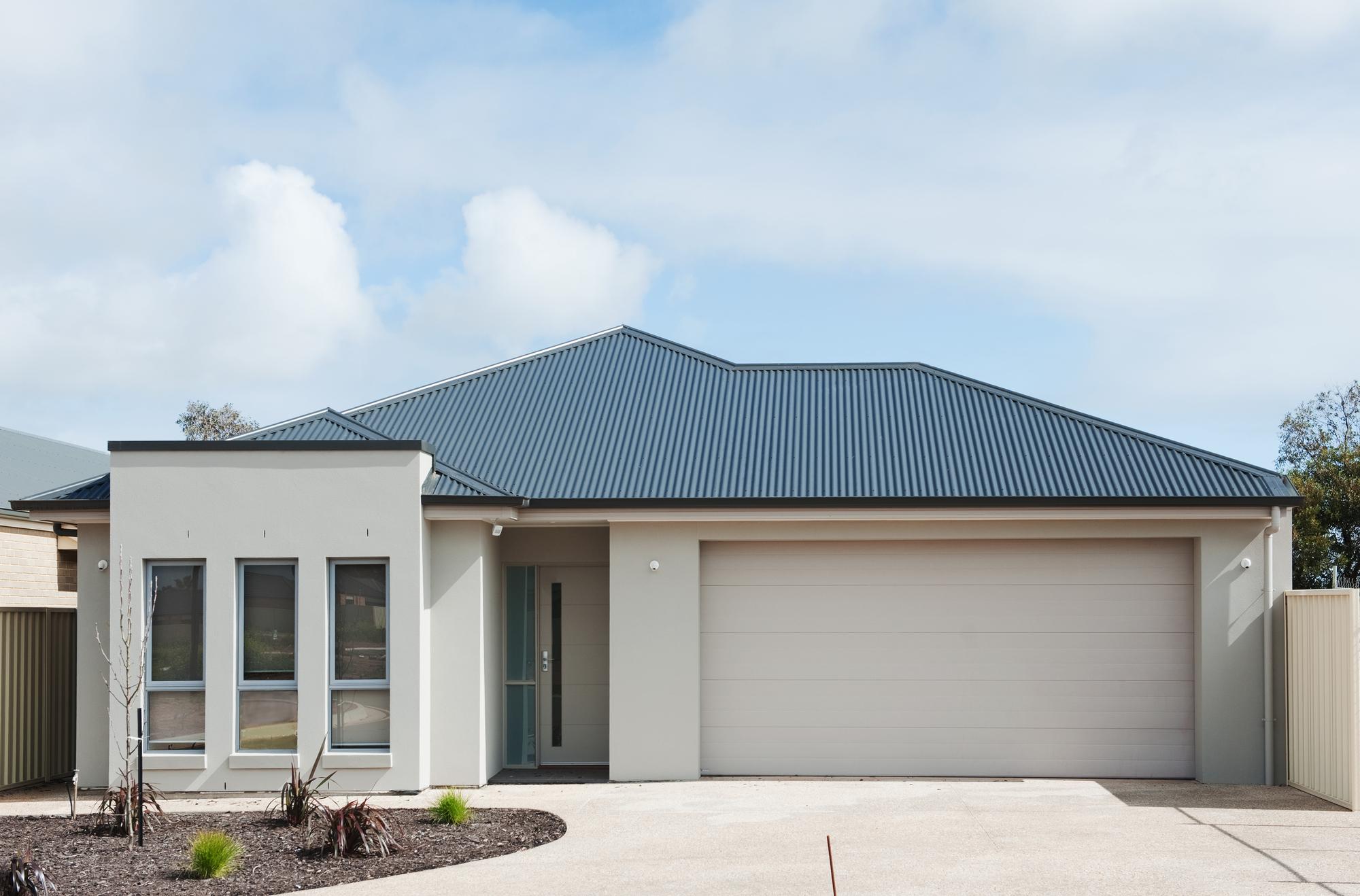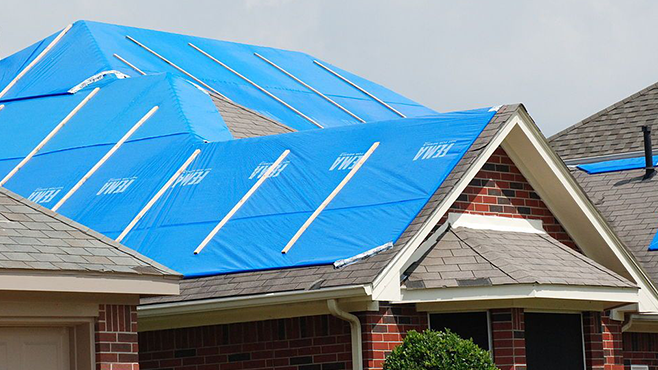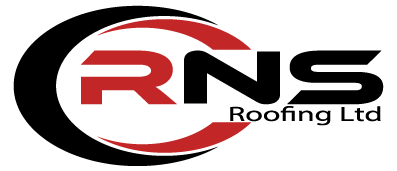As an environmentally-conscious homeowner, you may have heard about the concept of a blue roof and wondered what exactly it is. Now the question is What is a Blue Roof? A blue roof is an innovative stormwater management system that harnesses the power of nature to create a sustainable solution for handling excess rainwater and runoff. Unlike a traditional shingle or membrane roof, a blue roof is designed to retain water rather than quickly shed it.
By installing special water retention components, blue roofs can hold substantial volumes of water released slowly through evaporation or filtration. For homeowners and businesses, blue roofs offer an eco-friendly way to reduce pollution, lower infrastructure costs, and create a self-sustaining system that mimics natural water cycles. If you’re interested in smart, sustainable solutions for managing stormwater, a blue roof may be for you.

What Is a Blue Roof?
A blue roof, also known as a green roof, is an environmentally friendly roofing system where live plants are installed on rooftops. Blue roofs provide many benefits to buildings and the environment.
The plants on blue roofs help reduce stormwater runoff by absorbing rainwater and snowmelt. This decreases the burden on sewer systems and reduces flooding. The plants also help lower urban air temperatures by absorbing heat and releasing water vapour and oxygen. This can reduce cooling costs in the building below.
Blue roofs improve air quality by producing oxygen and trapping airborne pollutants and carbon dioxide. They can also increase the lifespan of rooftops by protecting roof membranes from weather damage. The plants provide sound insulation and an aesthetic appeal as well.
There are two main types of blue roofs: intensive roofs which can support a wider variety of plants, trees and shrubs, and extensive roofs with a shallower substrate layer suitable for mosses, sedums, and grasses. Extensive roofs are lighter, require less maintenance, and are more cost-effective for most buildings.
Installing a blue roof does have higher upfront costs than a standard roof. However, they can qualify for tax incentives and rebates. Over time, the energy savings and environmental benefits provide an economic advantage. A blue roof can be an attractive, ecologically friendly option for new construction or replacement. Blue roofs benefit building owners and the community by reducing pollution and cooling costs.
With their many advantages, blue roofs are becoming popular in cities worldwide as an important tool for sustainable development. They represent an innovative solution to many environmental challenges in urban areas.
If You want Roofing Services In Horsham Call Now: 07469 582272
Benefits of Blue Roofs
Reduced Energy Costs
Blue roofs provide natural insulation for buildings, decreasing heating and cooling demands. The soil and plants help retain heat in the winter and deflect heat in the summer, minimizing temperature fluctuations inside the building. According to studies, blue roofs can reduce air conditioning needs in the summer by up to 75% and heating needs in the winter by up to 25%.
Increased Roof Life Expectancy
The waterproof membrane under the blue roof is protected from damage by environmental elements like UV radiation and extreme temperatures. This protection has been shown to increase the lifespan of roofs by up to 200%. The plants and soil also prevent physical damage to the roof from hail, winds, and foot traffic.
Improved Stormwater Management
Blue roofs absorb and filter rainwater, reducing runoff by up to 100% for smaller storms. This decreases the burden on sewer systems and minimizes flooding risks in urban areas. The trapped water is then slowly released through evaporation and transpiration.
Environmental Benefits
Blue roofs create urban habitats for birds, insects, and small animals. They also produce oxygen, filter air pollutants, and reduce the urban heat island effect. By lowering air temperatures, they improve comfort for building occupants and surrounding communities.
In summary, blue roofs should be considered an investment that provides financial, structural, and environmental returns. They are a sustainable solution for ecologically-friendly buildings in the 21st century.

Types of Blue Roof Systems
There are several types of blue roof systems available for managing stormwater runoff. The most common options are:
Vegetated Roofs
Vegetated roofs, also known as green roofs, have layers of plants over waterproofing membranes. The plants help absorb and slow down rainwater, reducing runoff. Vegetated roofs provide insulation and help lower urban temperatures. However, they require maintenance and may not be suitable for some buildings.
Permeable Pavements
Permeable pavements include porous asphalt, pervious concrete, and permeable interlocking concrete pavers. They have spaces that allow water to pass through, filtering it before it seeps into the ground below. Permeable pavements reduce runoff and recharge groundwater. However, they require frequent maintenance to prevent clogs and may not be ideal for high-traffic areas.
Rainwater Harvesting Systems
Rainwater harvesting systems collect and store rainwater for later use. They capture water from rooftops and other surfaces, diverting it into cisterns or rain barrels. The stored water can then be used for irrigation, washing, or drinking. Rainwater harvesting reduces runoff and provides a source of water during droughts. However, the systems require space for storage tanks and regular maintenance.
Bioswales
Bioswales are shallow, planted channels that slow, filter, and infiltrate stormwater runoff. They contain layers of mulch, soil, and plants over a perforated pipe. As runoff flows through the bioswale, plants and microbes help filter pollutants before the water infiltrates the ground. Bioswales can reduce pollution and recharge groundwater. However, they require space and routine maintenance to function properly.
In summary, there are several effective blue roof options for managing stormwater sustainably while providing additional benefits. The ideal choice for a building depends on factors like climate, roof type, and available space. When designed well, blue roofs can significantly reduce runoff and pollution in an environmentally friendly manner.
Conclusion
In conclusion, a blue roof is an innovative solution for managing stormwater in urban areas while also providing environmental and economic benefits. Having a blue roof installed on your home or business is an investment in sustainability that pays off through energy savings, reduced flooding, and a smaller environmental footprint. While new technologies always come with an initial cost, the long term rewards of a blue roof are substantial. You owe it to yourself and your community to explore this option further. A blue roof is an elegant solution that allows you to do well by doing good.
FAQS About What is a Blue Roof
How does a blue roof work?
A blue roof uses a combination of storage and controlled release mechanisms. Rainwater is stored on the roof temporarily and then gradually released back into the environment, mimicking the natural water cycle and reducing the strain on traditional drainage systems.
What are the benefits of installing a blue roof?
Installing a blue roof offers several benefits, including flood risk reduction, improved stormwater management, decreased strain on local drainage systems, reduced water pollution, and the potential for water reuse.
Are blue roofs only for commercial buildings?
Blue roofs can be implemented in both commercial and residential buildings. They are suitable for a wide range of building types, from industrial complexes to residential apartments.

